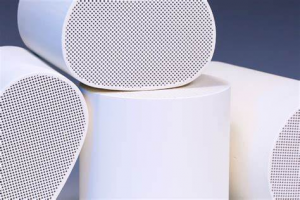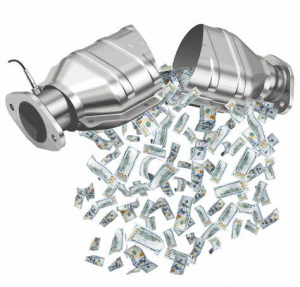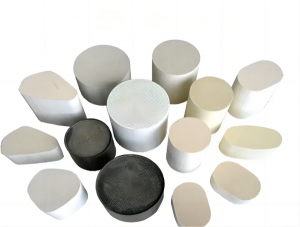A three-way catalytic converter is a device used in automobiles to reduce the amount of harmful substances that are emitted into the atmosphere. Coating this important component can help improve its function and efficiency. The coating also serves as an additional layer of protection against corrosion, rust, and other forms of deterioration that could lead to malfunctions or breakdowns. In this article we will discuss how coating a three-way catalytic converter can benefit your vehicle’s performance and longevity.
The main purpose of a three-way catalytic converter is to reduce emissions from internal combustion engines by converting pollutants into harmless ones before they are released into the environment. These converters work by combining nitrogen oxides (NOx), hydrocarbons (HC) and carbon monoxide (CO). This combination leads to more efficient operation and cleaner air for everyone around us. Applying a coating onto these devices helps improve their effectiveness even further while providing added protection against environmental elements such as moisture or extreme temperatures which may cause damage over time.
Applying coatings on automotive components has become increasingly popular due to its many benefits including improved fuel economy, increased engine power output, reduced exhaust noise levels, better engine performance under load conditions, greater resistance to corrosion or wear caused by friction between moving parts etcetera. Coatings applied on three way catalysts can provide additional thermal insulation properties which help keep heat generated during chemical reactions inside the device instead of transferring it outside where it would be wasted energy resulting in higher fuel consumption figures for your car overall. Additionally, some coatings offer superior abrasion resistance meaning they won’t wear away quickly when exposed to harsh road conditions such as potholes or gravel roads which often cause drivers headaches due to unexpected vibrations felt through their cars’ frames upon impact with these surfaces at speed – potentially leading you straight towards expensive repair bills if not dealt with accordingly!
Apart from improving performance parameters though there is another very important factor when applying coatings on any automotive component: safety! An uncoated catalyst isn’t nearly as effective in reducing emissions compared with one coated properly so having your car regularly serviced according to manufacturer recommendations should always include checking whether all relevant components have been treated correctly – especially those dealing directly with any type of toxic fumes like those produced by gasoline engines since long term exposure could potentially lead towards serious health issues over time if not taken care off appropriately right away!
Finally, although most professional workshops use high quality materials whilst carrying out repairs however sometimes using aftermarket products might seem like an attractive option due mainly because they tend cost less than OEM replacements but make sure you always check what kindof protective measures have been applied onto them beforehand since without the proper insulation factors risks associated with malfunctioning increases substantially thus making them much more prone towards damage caused either through normal usage patterns or unforseen external elements like rainwater seeping inside – both scenarios being equally dangerous depending upon each individual’s driving habits so caution must be exercised whenever considering switching brands/types just for monetary reasons only!
In conclusion; applying coatings onto three way catalysts is essential if wanting maximize performance output from modern day automobiles whilst ensuring utmost safety standards at all times – something no driver should ever overlook regardless if working within limited budgets or otherwise given importance their vehicles represent both financially plus emotionally speaking too!
Post time: Feb-27-2023











